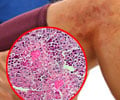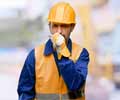Exposure to high levels of noxious gas emitted from gas stoves can exacerbate asthma symptoms in children, especially preschoolers, say researchers.
Exposure to high levels of noxious gas emitted from gas stoves can exacerbate asthma symptoms in children, especially preschoolers, say researchers.
Nitrogen dioxide (NO2), a toxic form of nitrogen oxide gas, is most prevalent in industrial zones but also found at higher levels in poor homes with unvented gas stoves.During the study, the research team compared the frequency and intensity of coughing, wheezing, shortness of breath and chest tightness to NO2 levels inside the inner-city homes of 150 Baltimore City 2- to 6-year-olds.
Eighty-three percent of the households had gas stoves, 72 percent were heated by natural gas, and 14 percent used gas stoves for heating in the winter.
They found that the toxic gas worsened day and night asthma symptoms in children. Each 20-point increase in nitrogen dioxide levels led to 10 percent more days of cough and 15 percent more days with limited speech due to wheezing.
"Because using stoves as heat sources is a hallmark of urban poverty, our study tellingly points to how profound and direct the effects of purely social and environmental factors can be on a child's health," said Johns Hopkins lung expert Nadia Hansel and study leader.
"Doctors caring for children with asthma should always inquire about the home's heating and cooking appliances and urge those using gas-based stoves and space heaters to switch to electric heating and cooking, if possible, or at least properly vent the exhaust gases," she added.
Advertisement
"We knew that but still we were disturbed by what we saw: As nitrogen dioxide levels crept up, so did the frequency and severity of these kids' symptoms," Diette added.
Advertisement
Source-ANI
SRM/SK














